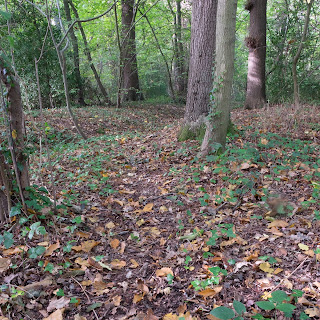I am still working on getting the best form of words to accompany my images for BOW Assignment 5 and have experimented with different ideas.
The first two examples are versions of earlier attempts, whilst the final example is written following reflection on feedback from my peer group hangout and a discussion with my tutor. I wanted the text to be concise and yet get over my thoughts and feelings. I didn't want to be too directive, yet wanted many of my earlier ideas and suggestions from other people to be implicit.
Walking in Woods
Walking allows me to slow down and fully experience and appreciate the landscape through which I travel. Footpaths disappearing into the distance are seductive. Woods can be places of mystery and paths often wind and twist, seeming to have no purpose other than to be followed, occasionally, it seems, through holes in the vegetation. Decisions have to be made at junctions when the horizon is limited. Paths are evidence of footsteps, human or animal, and perhaps hold memories. Larger, wide, well-trodden paths may hold countless memories, whereas more indefinite ephemeral paths may hold only traces of memory of few passings. How faint can these be and still be paths; how many memories?
Walking in Woods
Walking allows me to slow down and fully experience and appreciate the landscape through which I travel. When walking in woodland, it is easy to lose and find oneself again, to reflect, meditate and to reconnect with the world. Footpaths disappearing into the distance are seductive, perhaps holding memories of many passings over the years. Woods can be places of mystery and paths often wind and twist, seeming to have no purpose except to be followed. The horizon is limited and paths disappear round corners or through a hole in the vegetation, leaving the imagination to speculate on where they might lead or who or what might be there. At other times paths are indefinite and ephemeral, so faint as to be nearly not paths. Some are not as they seem and when followed lead to where no human could go.
Paths
As I walk into the wood the path is broad and well-defined, boundaries are clear. Many have passed this way. Beyond, the wood is wild and tangled. Deeper in, choices have to be made, paths become narrower. Fewer have now travelled the route. Increasingly the way becomes less definite, ephemeral, a trace of a path. Eventually, perhaps only a bent blade of grass or scuffed leaves indicate that something has been here. Finally, at the furthest extremity there is nothing; just the wood.
On balance my preference at the moment is for version 3. As well as these few short words I also now need to work on a further edit of the images and the introduction and evaluation for my work.






















